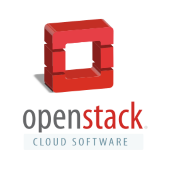
OpenStack is an open source cloud platform. Its available for public and private clouds. This post describes to how to create new instances and other resources using nova and heat. To begin you will first need to install some software.
Run this command to install the OpenStack client software (on CentOS Linux):
yum install -y python-keystoneclient python-novaclient python-neutronclient \ python-glanceclient python-cinderclient python-heatclient
Setup environment variables:
export OS_TENANT_NAME=projectname export OS_USERNAME=myusername export OS_PASSWORD=mypassword export OS_AUTH_URL=http://controller:5000/v2.0 export OS_REGION_NAME=regionOne
Substitute in your credentials and save these to a file to make them easier to load.
If you are using neutron networking you may need to run some additional commands:
neutron net-create myprojectnet neutron subnet-create myproject-net 172.16.0.0/24 --name myprojectsubnet \ --gateway 172.16.0.1 neutron router-create myprojectrouter neutron router-interface-add myprojectrouter myprojectsubnet neutron router-gateway-set myprojectrouter ext-net
For more information, check out the OpenStack Documentation.
OpenStack Nova
Before creating a new instance, you will need to add a SSH key to OpenStack for your new instance to use.
ssh-keygen nova keypair-add --pub-key ~/.ssh/id_rsa.pub mykey
Create new instance
myprojectnetid=$(neutron subnet-list | grep myprojectsubnet | awk '{print $2}')
nova boot --flavor m1.tiny --image cirros --nic net-id=$myprojectnetid \
--security-group default --key-name mykey myinstance1
OpenStack Heat
Heat creates new resources and groups them into stacks. Here is a sample CloudFormation template that can be used with heat. It creates a new instance, security group, and external IP.
{
"AWSTemplateFormatVersion" : "2010-09-09",
"Description" : "demo template",
"Parameters" : {
"subnet" : {
"Type" : "String"
},
"image" : {
"Type" : "String"
},
"key" : {
"Type" : "String"
}
},
"Resources": {
"demo" : {
"Type" : "AWS::EC2::Instance",
"Properties" : {
"SecurityGroups" : [ { "Ref" : "demogroup" } ],
"KeyName" : { "Ref" : "key" },
"ImageId" : { "Ref" : "image" },
"InstanceType" : "m1.micro",
"SubnetId" : { "Ref" : "subnet" },
"Tags" : [
{
"Key": "Type",
"Value": "demo"
}
],
UserData": {
"Fn::Base64": {
"Fn::Join": [
"\n",
[
"#!/bin/sh",
"echo hello world"
]
]
}
}
}
},
"eip1" : {
"Type" : "AWS::EC2::EIP",
"Properties": {
"InstanceId": { "Ref": "demo" },
"Domain": "vpc"
}
},
"demogroup" : {
"Type" : "AWS::EC2::SecurityGroup",
"Properties" : {
"GroupDescription" : "Allow demo services",
"SecurityGroupIngress" : [
{
"IpProtocol" : "tcp",
"FromPort" : "22",
"ToPort" : "22",
"CidrIp" : "0.0.0.0/0"
}
],
"SecurityGroupEgress" : [{
"CidrIp" : "0.0.0.0/0"
}]
}
}
}
}
Here are the commands to create a new stack named demo using the template:
myimage=$(nova image-list | grep centos-7.0 | awk '{print $2}')
heat stack-create -f demo.json demo \
-P "subnet=$myprojectnet;image=$myimage;key=mykey"
To show the details of the demo stack, run the following command:
heat stack-show demo